From doom to boom – the District of Kitimat’s local economy has rebounded with billions of dollars in existing and proposed major industrial developments.
Only a few short years ago, the town of 9,000 faced an exodus of locals in the wake of two industrial plant closures.
But now, with a variety of major projects planned and underway such as Rio Tinto Alcan’s aluminum smelter upgrade, LNG Canada, the Pacific Trails Pipeline and Coastal Gas Link project, Kitimat appears to be the king of economic development comebacks.
But how did the District pull it off?
Northern Development recently got in touch with Rose Klukas, Economic Development Officer for the District of Kitimat, to get the run down on the doom times, the District’s investment focus and how it plans to overcome growing pains and capitalize on the coming surge of development.
Q:You were raised in Kitimat – what do you love most about working and living here?
A:My parents arrived in Kitimat from Europe in the summer of 1954. I love the history I have here, recognizing the huge risk my parents took coming to a brand new community, under development and very remote, to raise their kids. Growing up I enjoyed the advantages of living in a small town with good amenities … largely taking for granted the great recreation facilities we had, the multi-cultural climate, the close proximity of everything and the outdoors we love so much. These are the same reasons my husband and I chose to stay in Kitimat to raise our family.
Q:Methanex’s methanol plant closed in 2006. The Eurocan pulp and paper mill closed in 2010. How did you see that affect the community? How did it affect your life?
A:Kitimat has always prided itself on a diverse economy. By the early 1980’s we had three major industries operating in the community. When the methanol plant closed its doors in 2006 it was a big hit to our small town. Ironically, the plant closed due to the high price of natural gas because of a shortage of gas in North America … how quickly things change!
When the pulp and paper mill announced its 2010 closure the community definitely felt the blow. On a personal level, my husband’s job was a casualty of that closure. It had a significant impact on my family. We personally fretted over the possibility we might have to move elsewhere in Canada to find work. I say fretted because we love Kitimat and wanted to raise our teenagers in this town. While the summer of 2010 was a very uncertain time in Kitimat, by the end of 2010 Kitimat LNG filed for a natural gas export license. That was the beginning of unprecedented interest in industrial development in Kitimat. A year later Rio Tinto Alcan made its final investment decision to build a new aluminum smelter. This project has significantly boosted the local economy and has been a good taste of things to come.
Q:What’s the single biggest change you’ve seen in Kitimat in the past two years?
A:The feeling of optimism in Kitimat’s future is by far the best change that has happened in the past two years. While we are not completely certain which projects will come to fruition, we do know the world has recognized Kitimat’s potential for development, its location on year-round, ice-free tidewater close to overseas markets.
Q:Well-positioned for Asia Pacific trade, Kitimat claims to hold the title for the most cost-effective northwest transportation corridor port. What are a few additional comparative advantages that make Kitimat so appealing for trade and investment?
A:People ask me if I’m surprised at the amount of interest there is for development in Kitimat. I tell them ‘no.’ The same attributes that attracted Alcan Aluminum Company to Kitimat in the 1950’s are drawing new industry to Kitimat today. A deep, year-round, ice-free port, close to Asian markets with room to grow. A history that includes industry … meaning citizens have an understanding of what it’s like to co-exist with industry.
Q:With a spike in industrial development, there are always residual growing pains. For Kitimat, the housing shortage seems to be one of the largest challenges. What are the current steps that the District of Kitimat is taking to help alleviate this issue?
A:We have seen dramatic uptake in activity in a short period of time here in Kitimat and will likely continue to see growth for the foreseeable future. There are a number of steps the District of Kitimat is undertaking to mitigate this situation and prepare for the future, including participating in the community’s social impact committee. A housing committee also exists. In 2012, a housing study was produced and a new study will be released in the fall. Meantime, the District of Kitimat has introduced new by-laws, for example, offering incentives to local homeowners to add secondary suites to their homes. As well, there’s discussion about the possibility of allowing coach houses in Kitimat. So the municipality is addressing these concerns in a very real way.
Q:With more than $18 billion in potential projects proposed, Kitimat could have a very promising future ahead of it. What is the District’s economic development vision over the long term?
A:Kitimat’s economy is largely based on industrial development. Industrial taxation keeps residential property taxes low (I believe second lowest in B.C.), and allows the community to have good amenities often only seen in larger communities. As natural gas projects come on stream, I think we will see value-added to natural gas projects return to the valley … perhaps methanol or other gas-to-liquids projects. This is in keeping with Council’s desire to advocate for value added projects. As technology changes, it will be interesting to see how renewable energy projects gain ground in the region. While it may be years away before reliable sources of renewable energy replace traditional energy sources, it is something we are keeping our eyes on here in Kitimat.
But industry is only one facet of the potential that exists here. I believe there is a huge opportunity for entrepreneurs to start their dream business, with room to think outside the box. We live in a day and age that recognizes the importance of a creative economy – using talent, culture and ideas to develop a business. We support this type of thinking!
Tourism is another area that we will see growth, perhaps in the traditional sense – fishing and outdoor adventures – and maybe in a less conventional sense – industry tours. After all we hope to see the first export LNG facility in Canada come on stream here in Kitimat.
Q:What are Kitimat’s barriers to growth and investment? How do you plan to overcome them?
A:I’m definitely a glass half full kind of a gal … we are willing to work with investors to think of creative solutions to challenges. Having said that, change does bring growing pains. While many investors are interested in Kitimat, locating suitable land can be challenging. And while we encourage higher density building plans, we recognize we need to ensure infrastructure can support these new, higher numbers. Labour, being a global commodity, is also a concern. We know we need to attract thousands of construction workers, never mind all the workers to support all other businesses in Kitimat. But none of these challenges are insurmountable.
Q:What’s the number one message you want to get out to potential investors about Kitimat?
A:Kitimat, although a fairly young community, has had a fairly strong and stable economy throughout its history. We expect that to continue with industrial development over the next few years. But opportunities in Kitimat aren’t limited to industry. I encourage anyone who has a creative idea for business or commercial development to come chat with me. There’s definitely room here for the creative thinker!


